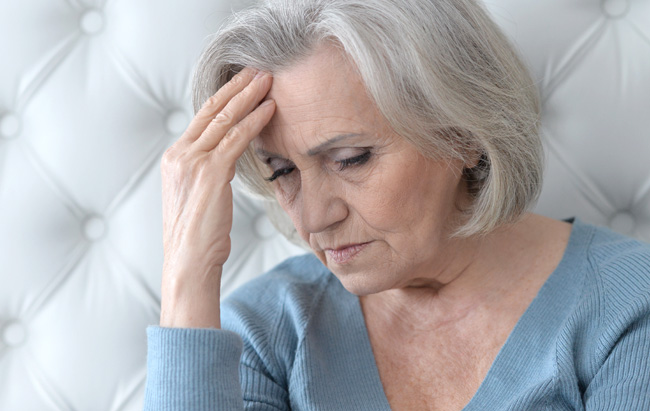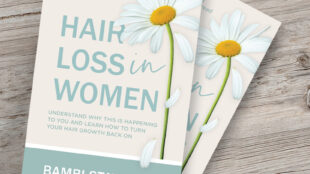Female Hair Loss – more fact than fiction

Female hair loss is a far more common problem than most people realise. It’s not often part of the general narrative. It’s therefore hard to believe that many people still believe that hair loss is only a problem faced by men. Thinning hair and hair loss actually affects one in three women over the age of 30!
This only adds to the stigma felt by female sufferers and as female hair loss affects so many women. It should be discussed and normalised in order to support women effectively.
So what constitutes Female Hair Loss?
The average person loses approximately 50 to 100 strands of hair a day. Some women report losing 150 strands per day or more. Generally, a loss of 150 hairs in a day may signal the presence of female pattern hair loss. It is something that should prompt further investigation by a healthcare professional.
The earliest signs of female hair loss to look out for are an unusual build-up of hair in your hairbrush or shower drain, more hairs falling out when you wash your hair and loose hairs on your pillow or clothing. Other visible changes are noticeable when styling your hair. For example, being able to see your scalp more obviously in downlights by your bathroom mirror. Perhaps you have noticed hair clips feeling less secure than normal? Perhaps you have to wrap elastic bands more times around the hair when tying it up in familiar styles?
Noticing any of these signs should prompt you to visit to your GP. Early diagnosis and intervention has the best long term outcomes. It also gives your GP a good baseline to help monitor the progression of the condition over time.
What causes Female Hair Loss?
Our hair naturally starts to thin with age. The thinning process often begins around the age of 30, steadily increases and peaks in the early 50s. The causes of an increased level of hair loss are varied. They may include: hereditary hair loss, ongoing health conditions or bouts of sudden, serious illness. Other known causes are hormone imbalances (caused by things like pregnancy or menopause), autoimmune illnesses, thyroid conditions, medications and iron deficiencies. There is further reading about female hair loss here.
Hereditary hair loss is the most common reason for thinning hair. It can be passed down from either the mother’s or father’s side of the family.
The progression of the condition can appear as a diffuse thinning over the top of the head and along the central part. This may be accompanied by a progressive thinning along the hairline.
The physical conditions listed above all throw the body’s systems off balance and can contribute to thinning hair and hair loss in their own way. The medications that may play a part in increasing the risk of thinning hair, are those that help to manage cholesterol, thin the blood and help to control blood pressure.
What to do about it
The first step in dealing with female hair loss, is consulting with a trusted healthcare professional in order to rule out any of the above causes.
A GP will first try to find a medical cause for the condition either from a hormonal or skin/scalp based perspective. This may require some intervention from a specialist like an Endocrinologist or Dermatologist. The next course of investigation will focus on lifestyle habits like diet , sleep and stress levels as these things can also significantly contribute to female hair loss.
If left untreated, thinning hair and hair loss generally worsens over time. When female hair loss is the result of genetic factors it may not be completely prevented, however finding the cause and reviewing your lifestyle and hair care habits can help to minimise the effects and severity of the thinning process. Early treatment is vital and leads to the best long term results.
What are the best female hair loss treatments available?
There are a number of vitamins and medications available to help treat female hair loss including viviscal and minoxidil – a non-greasy, topical treatment that doesn’t interfere with hair-fibre concealers like Boost N Blend or other styling products. Hair loss concealers like Boost N Blend are a great way to help disguise fine, thin and thinning hair while you wait for the effects of the available vitamin and medicinal hair loss treatments.
The future of female hair loss
Valuable advancements continue to be made in the field of female hair loss treatments. A host of treatments and concealer products are now available to assist women suffering the effects of female hair loss but another important aspect of this journey should be that women feel more confident to share their experiences with others.
As hair loss affects one in three women over the age of 30, we really should work towards normalising the condition and supporting women through the available treatment processes.





